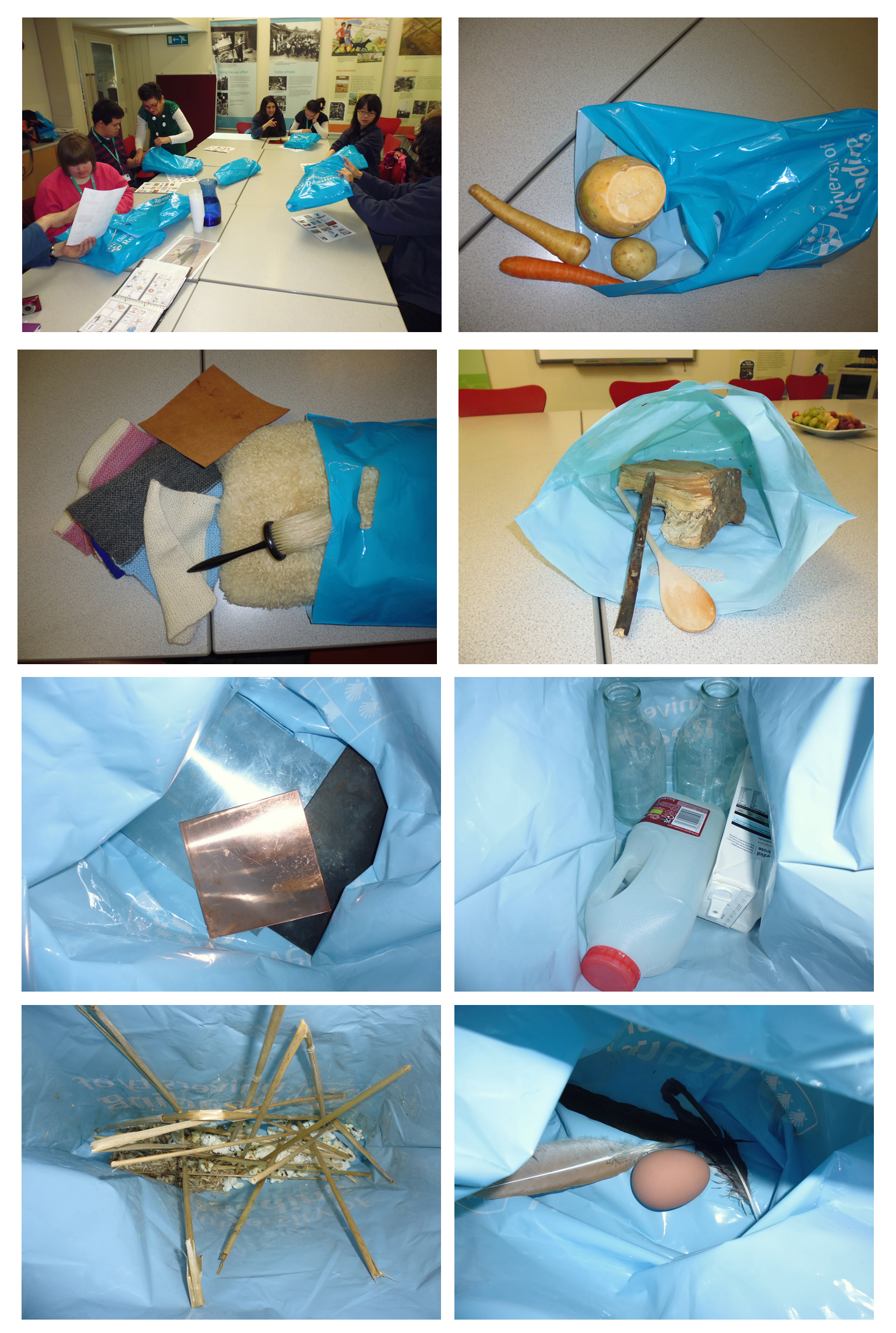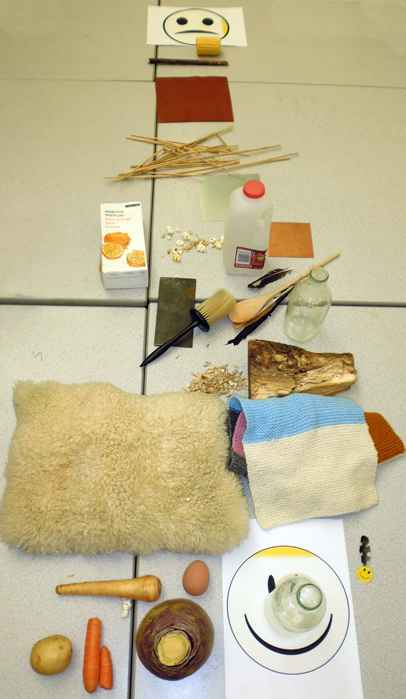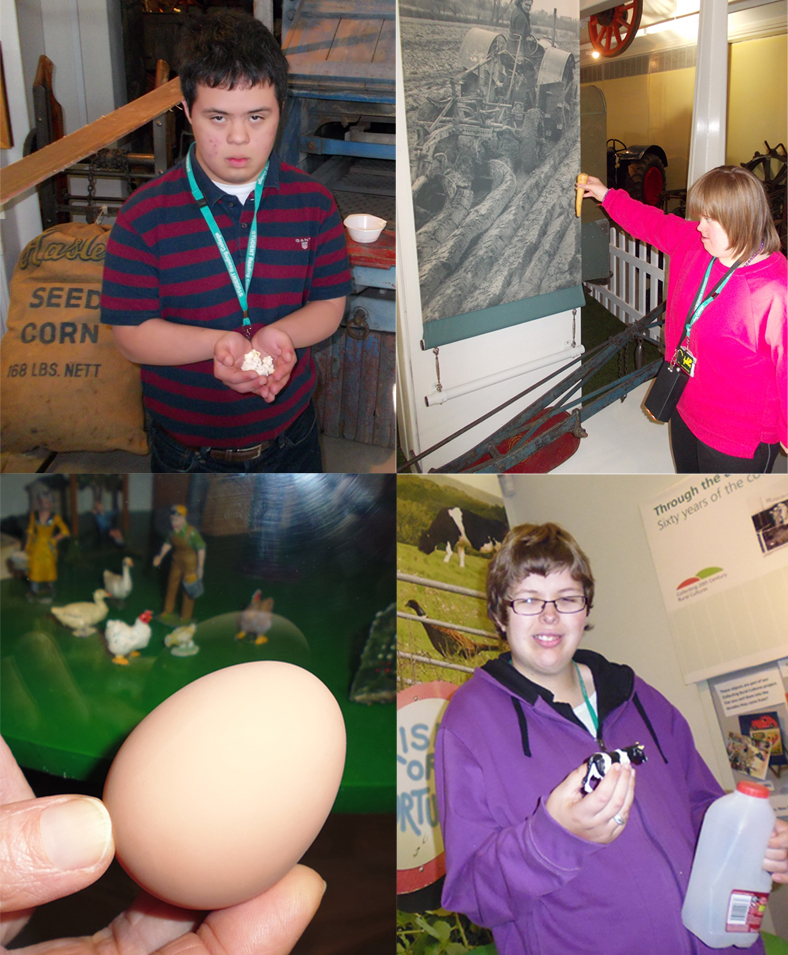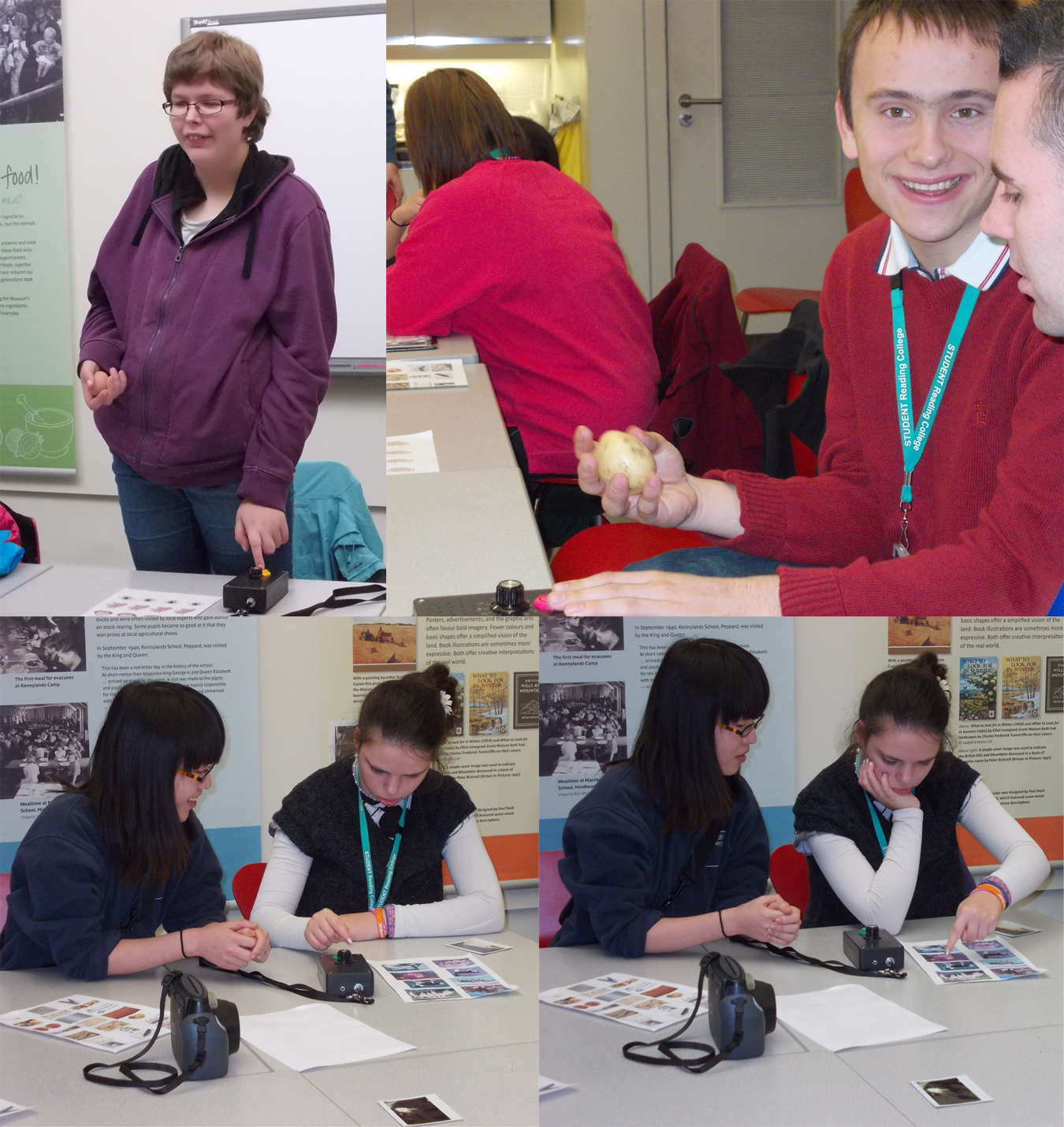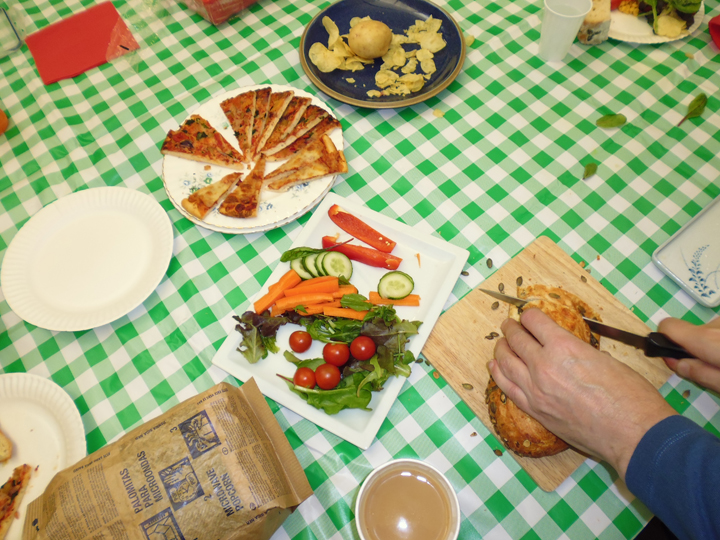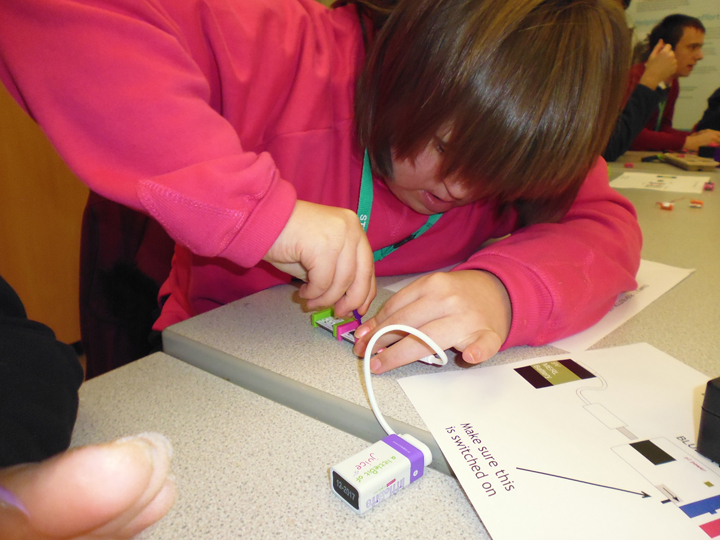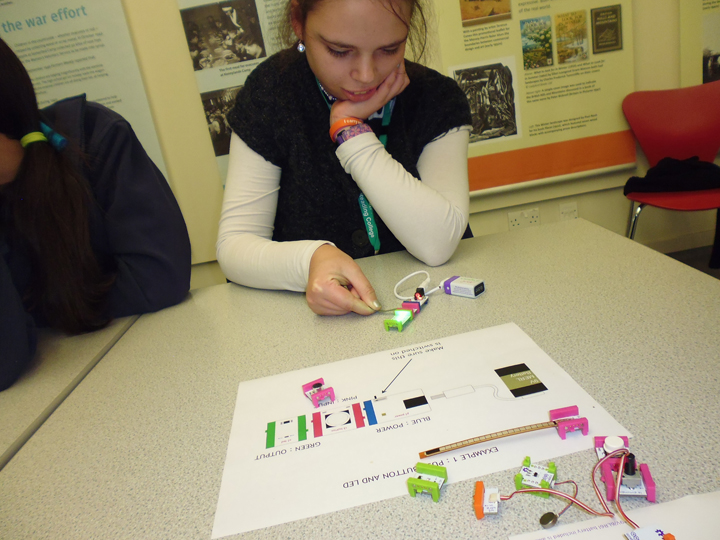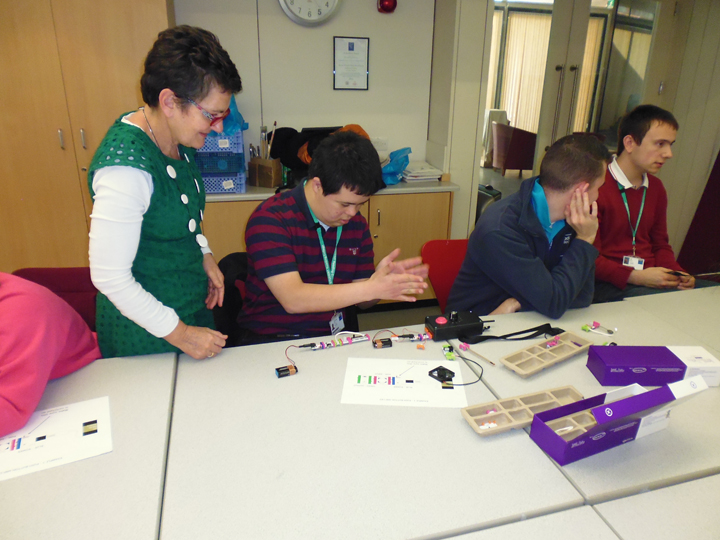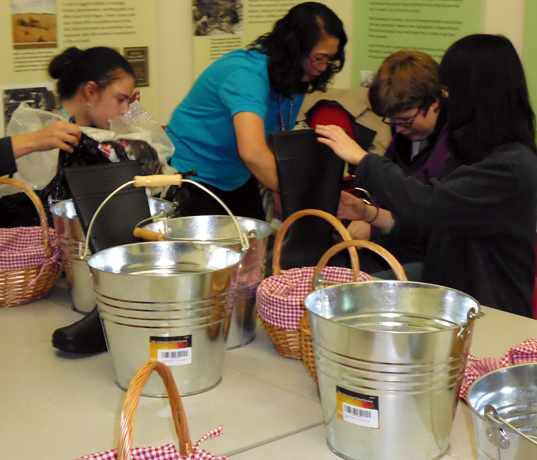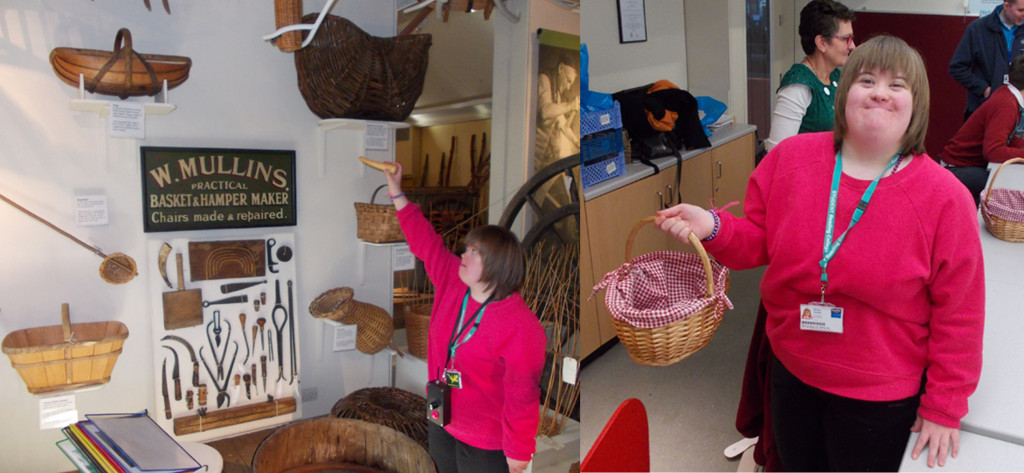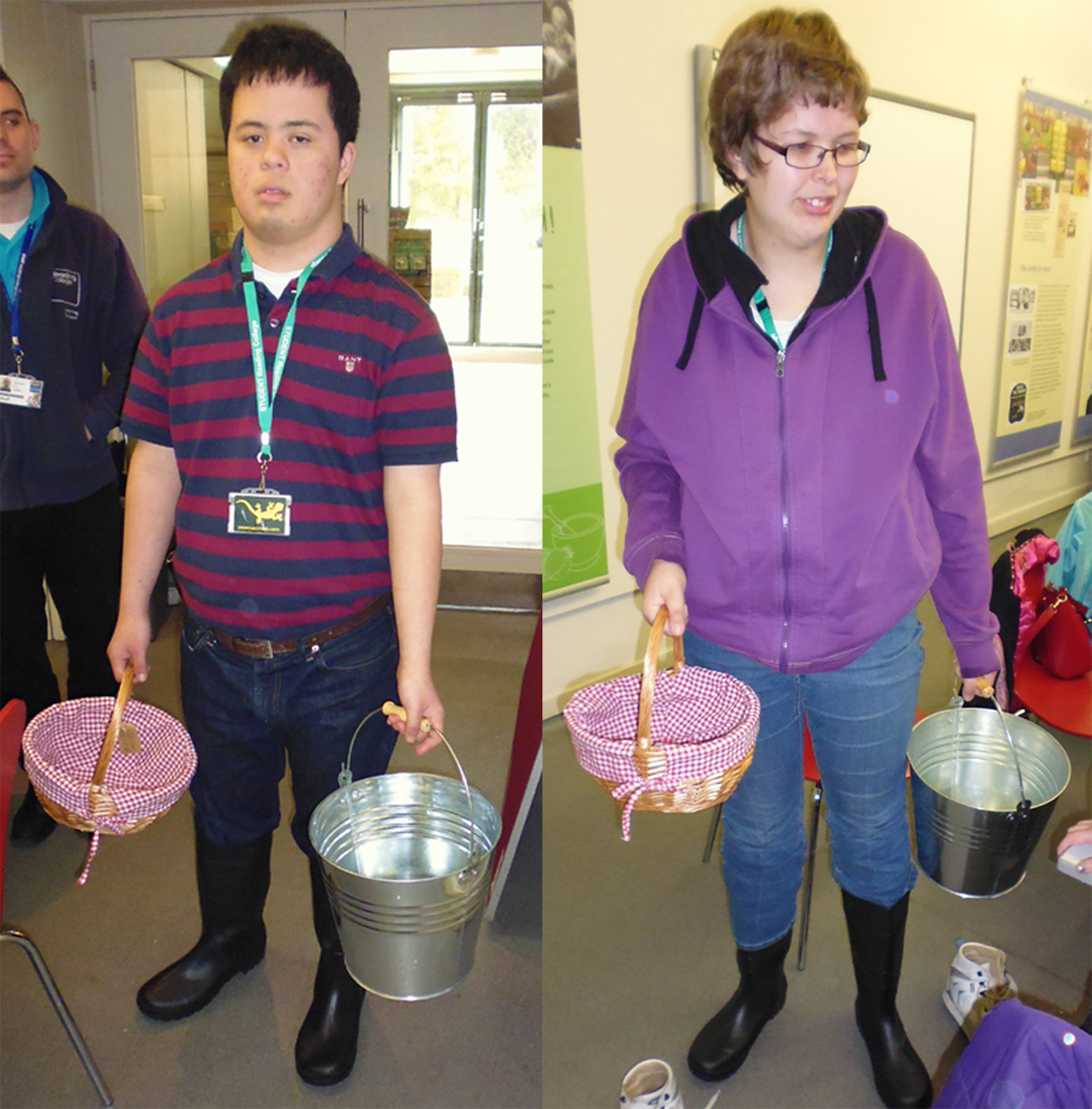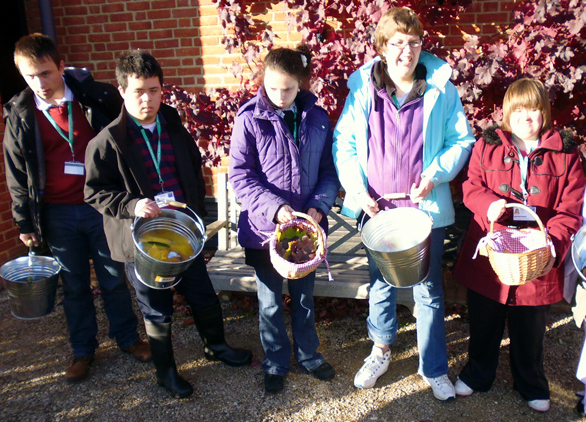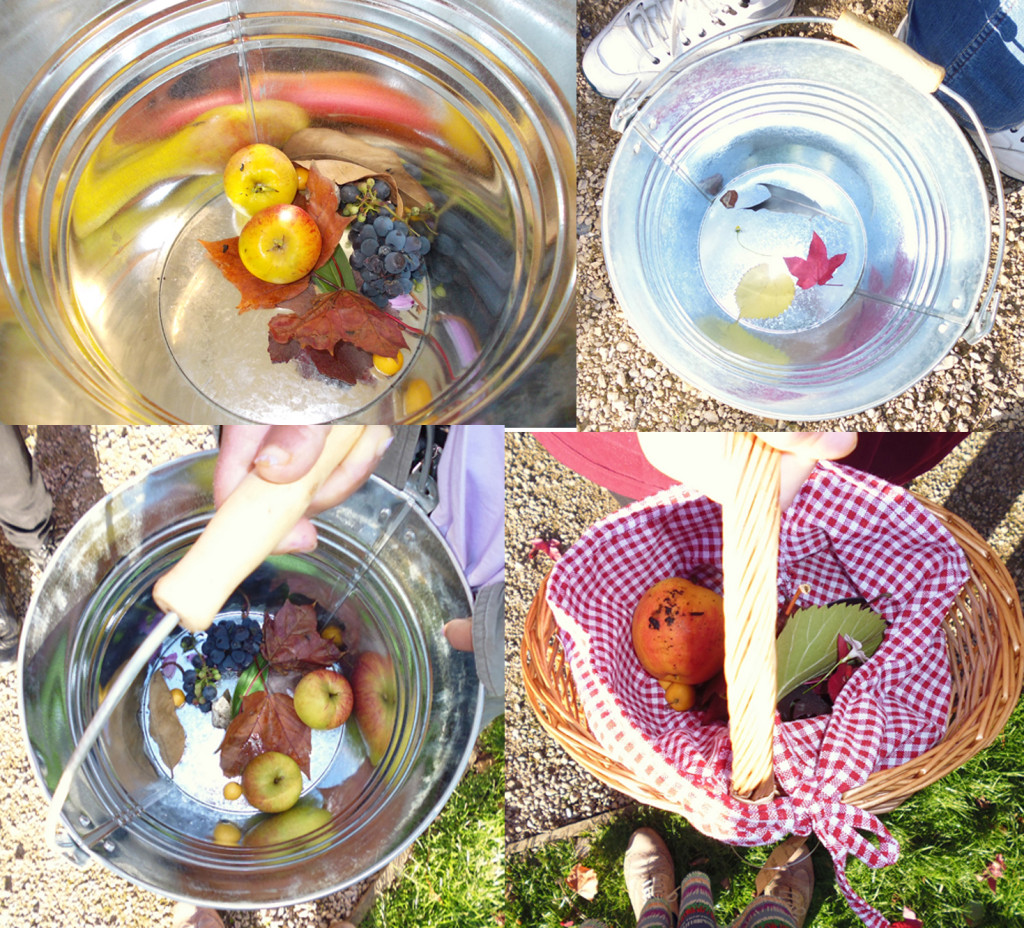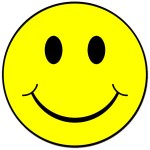We focused this workshop on the sense of TOUCH in the morning, we had seven bags each with a collection of materials inside. We asked the Co-Researchers to feel inside the bags first and try to describe how the materials felt, some of the words the group used were rough, smooth, soft, hard, cold and warm. The picture below shows the group touching objects in the bags then using some pictures to discuss the types of materials and how they felt touch.
After our Co-Researchers had described how the materials felt we asked them to place them in order of preference, the objects nearest the smiley face were their favourites the ones near the sad face our Co-Researchers least favourite material to touch. Luke chose his favourite as the milk bottle as it reminded him of breakfast, the softer materials such as the fleece and wool blanket were very popular as were the root vegetables, but the piece of sweetcorn was too cold and slimy to touch, the metal hard and cold. The picture below shows the lineup of the groups choices.
Then our Co-Researchers were asked to choose one of the objects in the bags that they really liked to touch, could they find something in the museum that they associated with the object? This was quite a difficult task, the picture below shows Rachel who chose a Parsnip, Sian chose a plastic milk bottle, Guillermo chose some pop corn and Rumena who chose an egg, they are photographed holding the object next to what what they found to connect it in the MERL collection.
We also asked the group to link one of the objects in the bags to a sound from the sound boxes. Rachel could remember where the sounds were on the dial! The image below shows Sian with an egg pressing the sound box to make the sound of hens, Luke he chose a potato and played the sound of a steam engine and Skye also chose the egg but continually pressed the button on the sound box so the clucking sound of the hen started to sound like barking and she pointed to the picture of the dog on the image sheet, we thought this was good observation of an accidental invention.
Robyn made us a great lunch again with salad, pizza, popcorn, sweet corn, bread that we sliced on the table and carrot cake. This time Robyn decided to keep the food on plates that could be passed around by the group rather than plating it up first the group were able to pass the food around to everyone.
After lunch we asked the Co-Researchers to try the littleBits electronics kit that we had used in the last workshop. We asked the group to make LED’s light up using different sensors. The image below shows the Rachel altering the pulsing of the LEDs with a small screwdriver and Skye trying out the pressure sensors from the littleBits electronics kit. Rumena and Rachel are becoming experts with the littleBits kit!
We also used a sound sensor, connected to the sound box, the picture below shows Sian and Guillermo clapping to activate the sound sensor.
We practised using littleBits triggering the sounds from the sound box and LED’s with different sensors, then we opened some parcels, inside were various types of containers linked to farming, there were Buckets, Baskets and Boots.
These objects were inspired by the museum and the idea of a container to collect sensory information in. We wanted to experiment with objects other than plain boxes that we used last year at Speke Hall. We explained to the group that we chose these objects because they linked to the MERL collection, farming and they were all objects that could contain things. We asked the Co-Researchers what you could put in a bucket? Luke said water and Skye said eggs, she also mentioned that you could collect eggs in baskets too. Rachel had seen baskets in the museum and she linked the parsnip she chose earlier because she liked how it felt, to collecting vegetables in baskets.
Sian and Guillermo gave a practical demonstration of what goes inside a Wellie boot as they both decided to wear them. The picture below show them wearing the boots and caring the buckets and baskets.
Then we thought we’d try out the baskets and buckets, we asked the group to choose one of the containers and we went outside into the MERL garden to see what we could collect to put inside our buckets or baskets. The picture below shows the group outside collecting lots of autumn leaves, stones, apples etc.
The picture above shows some of the objects our Co-Researchers collected in their buckets and baskets from the MERL garden, the leaves were beautiful, their reflection in the shiny buckets were great and to capture them we finished off our workshop by creating some textured rubbings from the leaves we collected see the picture below.
During the last part of the workshop we introduced the idea to the group that we had made art from what we had found, outside enjoying how the materials looked in the buckets, how stones sounded when dropped in the bucket and also how interesting the leaves looked when we rubbed crayons over them to see the pattern and texture of the leaf. We also mentioned that these buckets, baskets and boots could have the potential to be containers for sensory information in the museum, we will continue to explore them in the next MERL workshop.
This was a really busy workshop our Co-Researchers impressed us with how focused and engaged they were all day.

